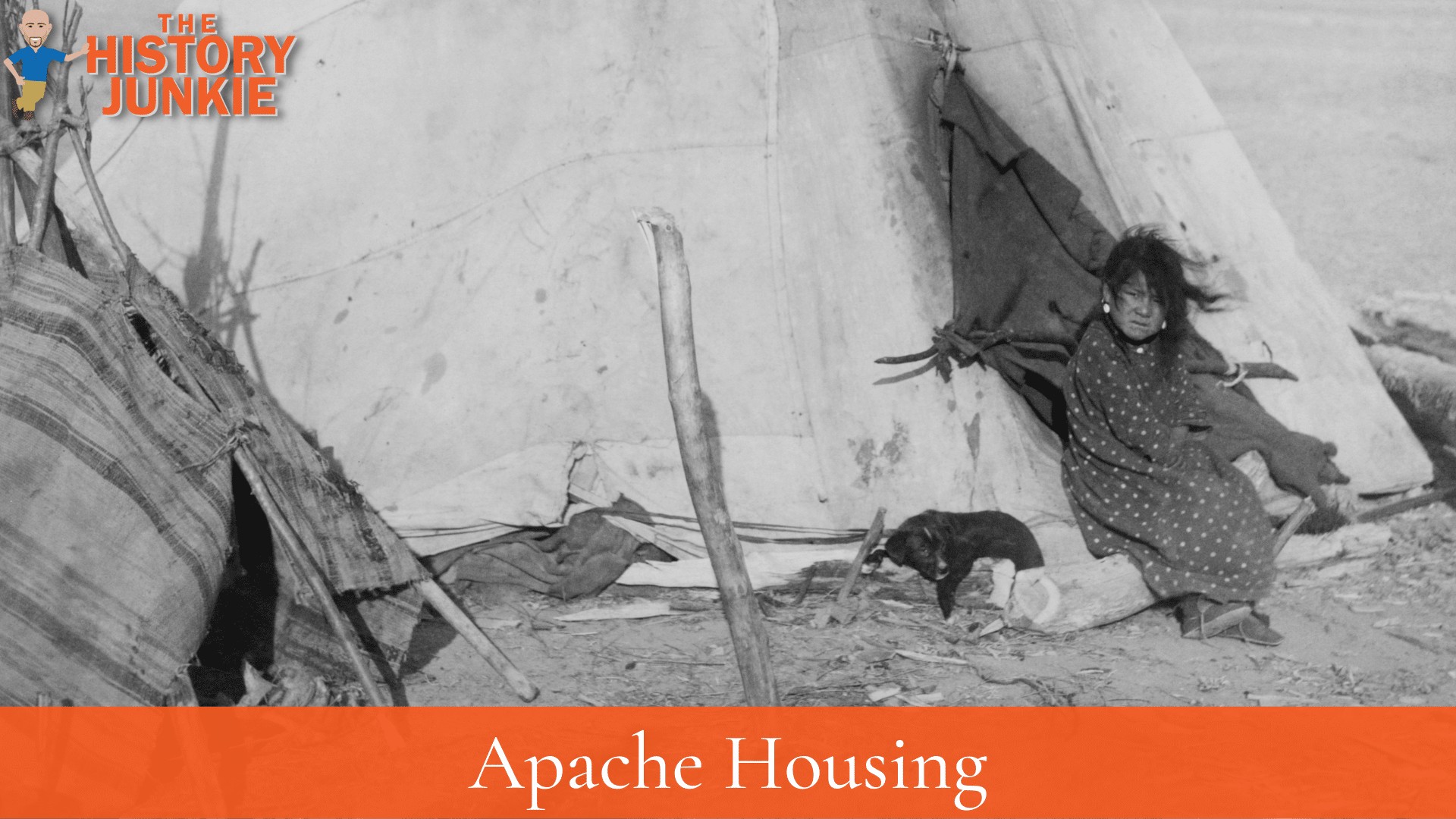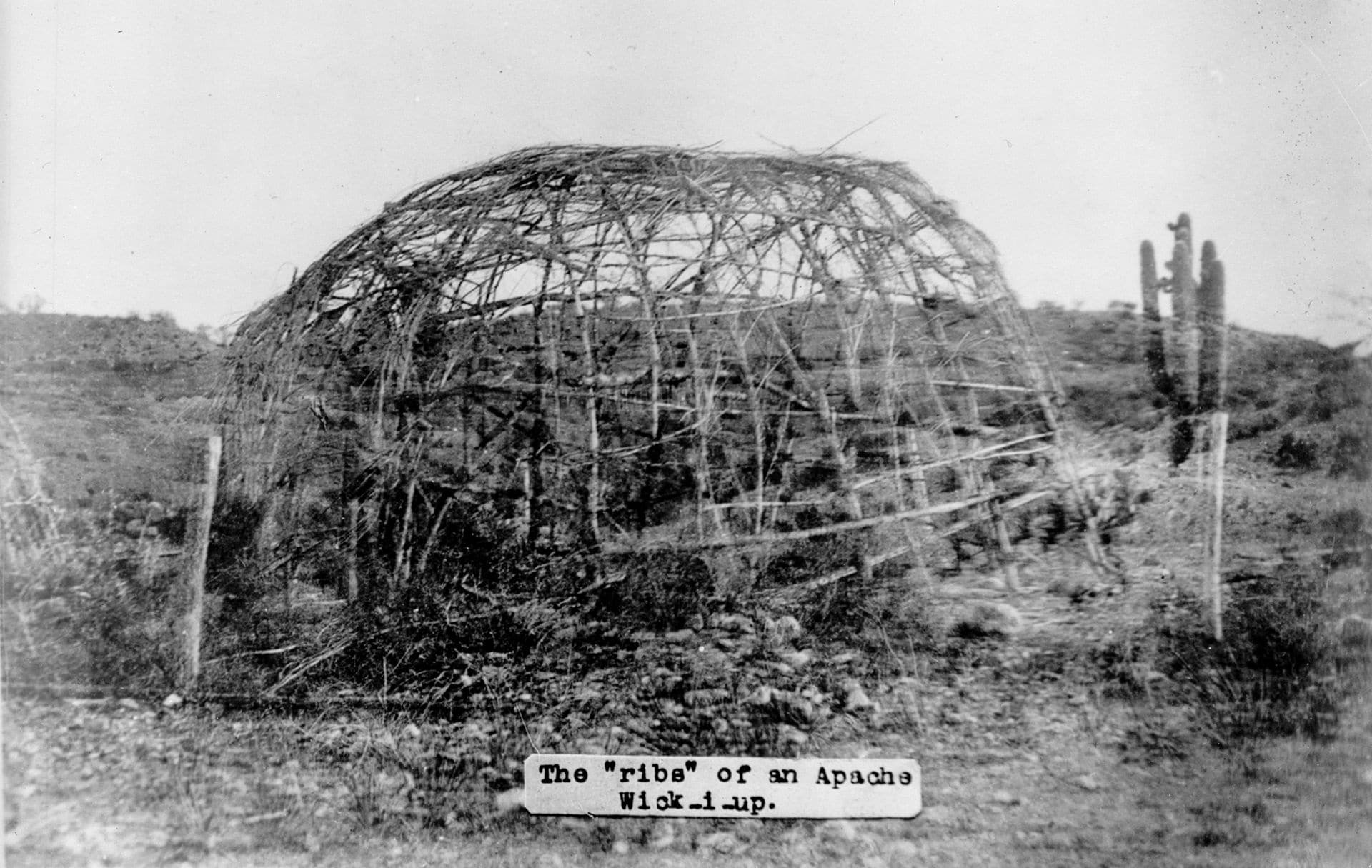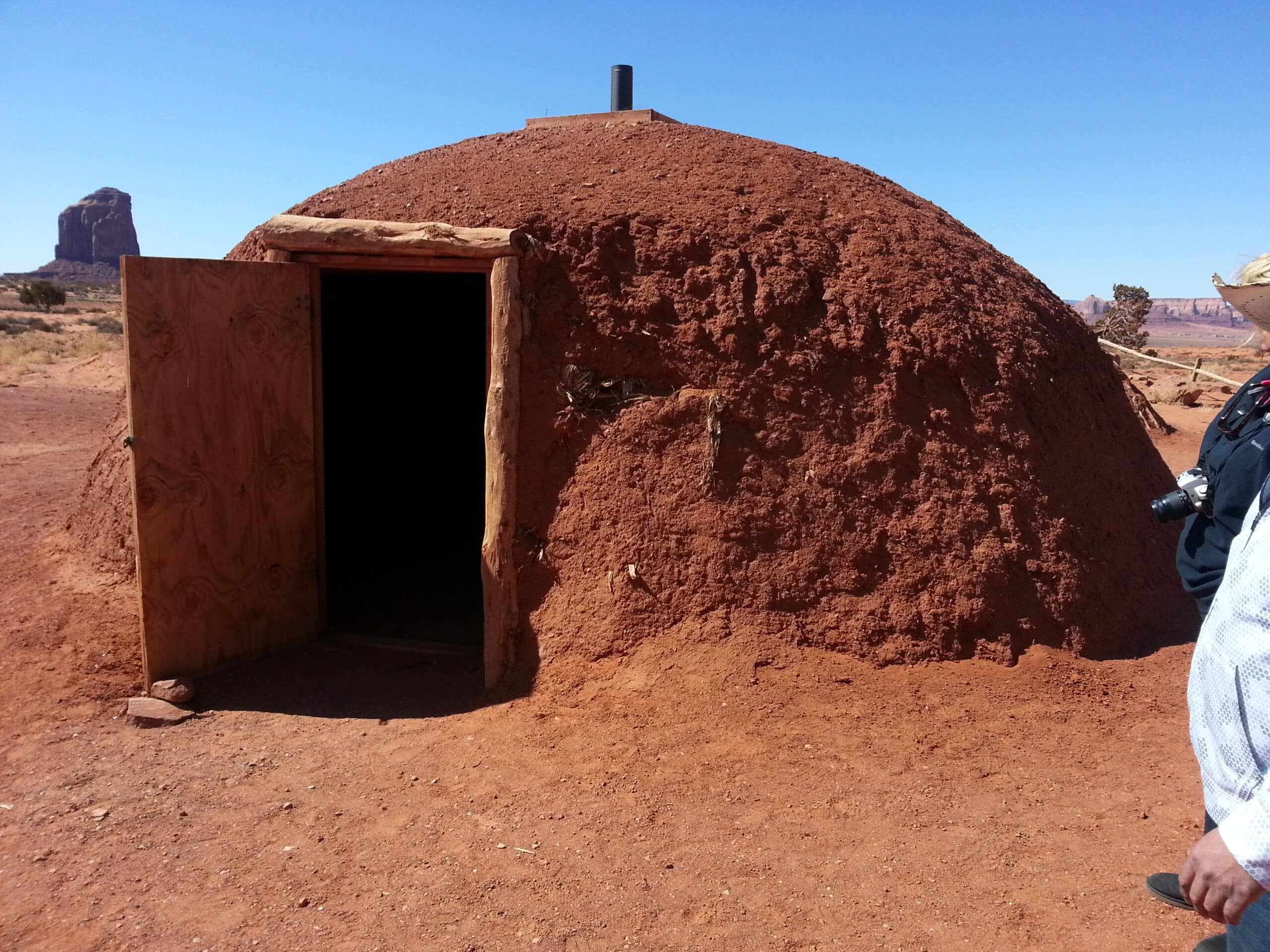Apache Housing was similar to many Southwest Indian Tribes.

They lived in three types of houses
- Teepees
- Wigwams
- Hogans
These homes suited their lifestyle and allowed them to be mobile and endure the elements in the Wild West.
Teepees

I would think every American has seen a teepee, but not most people understand why they were so important to Native Americans, especially the Plain and Southwest Tribes.
A teepee is known due to the smoke flaps at the top of the structure. These smoke flaps help ventilate the teepee. It provides warmth in the winter months because a fire can be made in the middle, and the smoke escapes through the top.
It also has a cooling effect in the summer due to its ventilation. Today, we are used to a complex HVAC system that cools our house, and we don't respect how dangerous the heat can become.
The shade and ventilation the teepee provided helped sustain the Apache during some of the hottest months of the year.
The teepee was durable and could be quickly disassembled and packed away when people need to relocate and can be rapidly reconstructed upon settling in a new location.
Wigwams

Wigwams are a more permanent structure than teepees. They can not be removed as quickly and provide more cover.
The home in which the family lives is made by the men and is ordinarily a circular, dome-shaped brush dwelling, with the floor at ground level. It is eight feet high at the center and approximately seven feet in diameter.
Long fresh poles of oak or willow are driven into the ground or placed in holes made with a digging stick to build it.
These poles, which form the framework, are arranged at one-foot intervals and are bound together at the top with yucca-leaf strands. Over them, thatching of bundles of big bluestem grass or bear grass is tied, shingle style, with yucca strings.
A smoke hole opens above a central fireplace. A hide, suspended at the entrance, is fixed on a cross-beam so that it may be swung forward or backward.
The doorway may face in any direction. For waterproofing, pieces of hiding are thrown over the outer hatching, and in rainy weather, if a fire is not needed, even the smoke hole is covered.
In the summer, the roofing is stripped off, and in the winter, the roof is covered and can withstand the elements comfortably.
Hogans

The Mexican Apache would sometimes live in a structure called a Hogan, but this type of housing was primarily used by the Navajo.
Hogans was a larger structure that took time to build.
A hogan can be round, cone-shaped, multi-sided, or square, with or without internal posts; timber or stone walls packed with earth in varying amounts, or a bark roof for a summer house, with the door facing east to welcome the rising sun for wealth and good fortune.
Traditionally structured hogans are also considered pioneers of energy-efficient homes. Using packed mud against the entire wood structure, the home was kept cool by natural air ventilation and water sprinkled on the dirt ground inside.
During the winter, the fireplace kept the inside warm well into the night.
